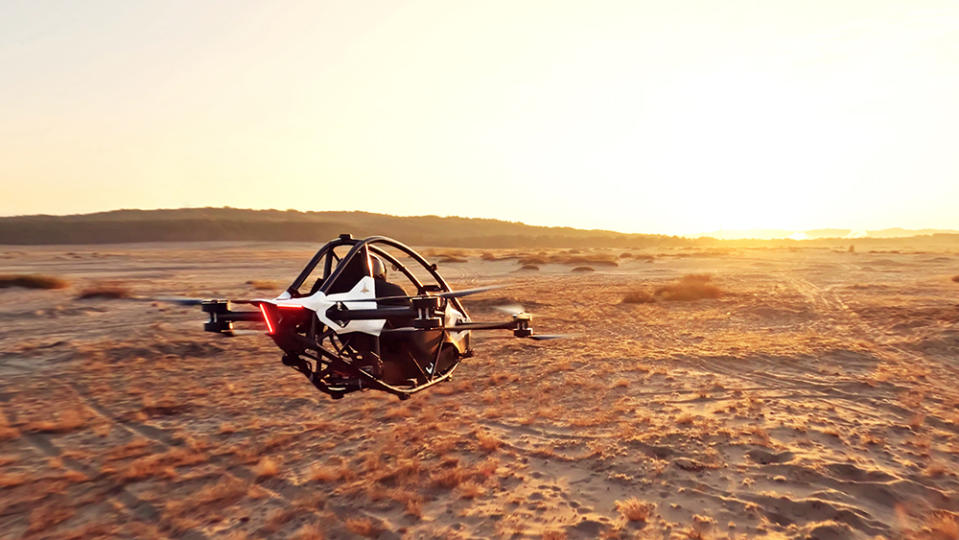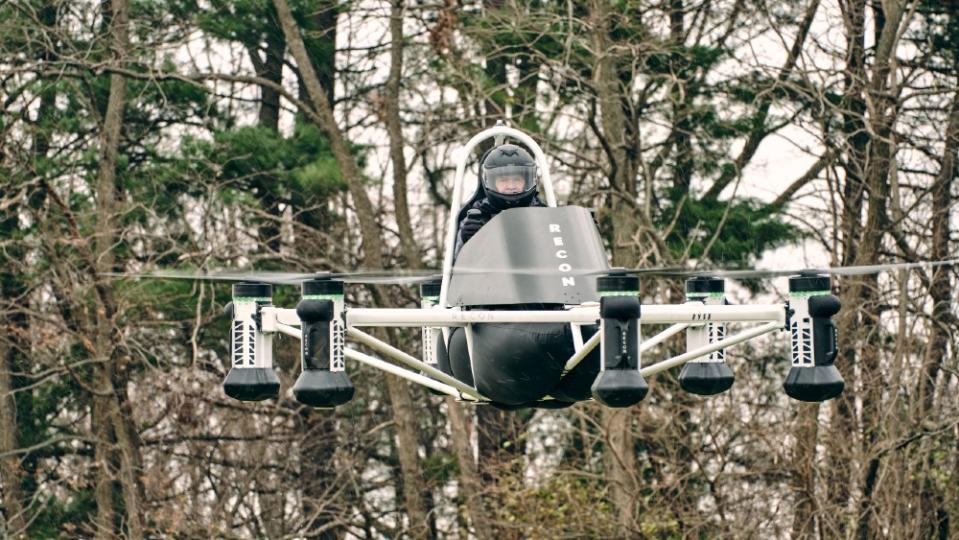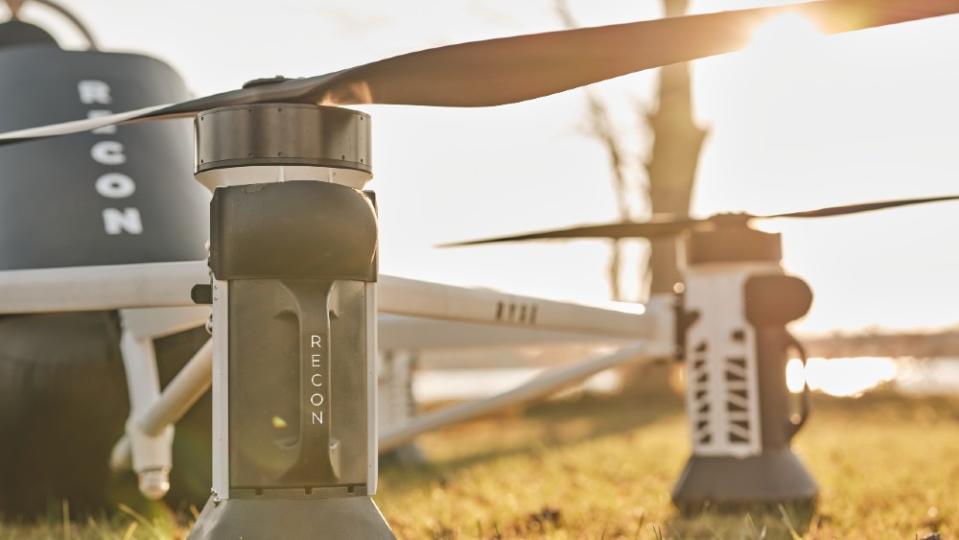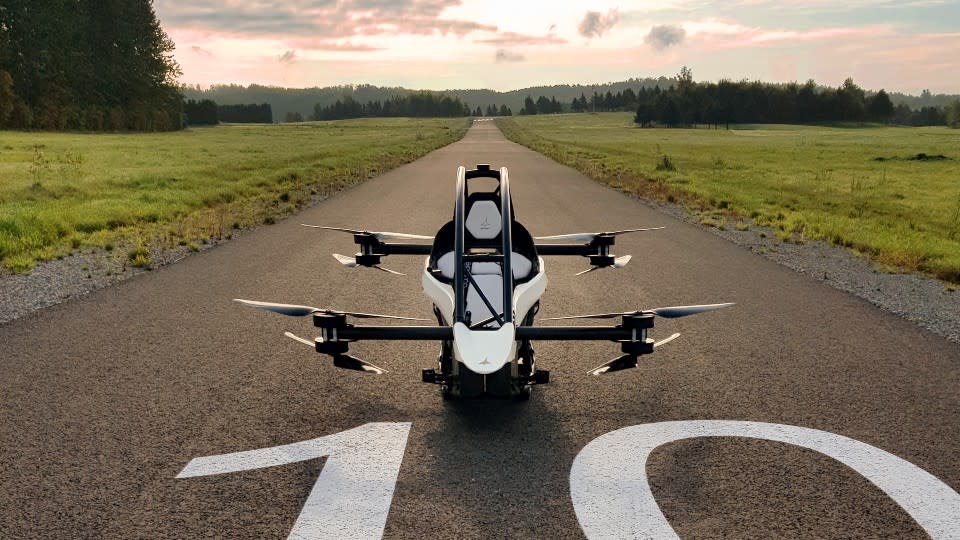These 5 eVTOLs Let You Take to the Skies Without a Pilot’s License

Unlike the commercial, five-person eVTOL air taxis scheduled to launch in a few years, these single-seat recreational aircraft are certified under the Federal Aviation Administration’s Ultralight category, which does not require operators to undergo special training.
Slated to go on sale later this year, the first of these models—the RYSE Recon and Jetson One—boast several safeguards in case of emergency. They have been engineered for amateurs to fly safely, with software-driven controls and redundant propulsion systems.
More from Robb Report
This New Personal eVTOL Will Have You Zooming Through the Air After 10 Minutes of Training
Private Aviation Has Pledged to Reach Zero Carbon Emissions by 2050. Here's How That Can Happen.
Watch: This eVTOL Just Broke a Record by Flying 155 Miles on a Single Charge

The manufactures claim the eVTOL will be as intuitive to operate as an all-terrain vehicle (ATV) and easier to fly than a trainer fixed-wing airplane. With the exception of the Doroni H1, you don’t even need a driver’s license. But all the manufacturers are requiring some form of training before they hand over the keys.
“The idea behind the FAA’s Ultralight regulations is that you don’t have to be a pilot,” Mick Kowitz, president and CEO of Cincinnati-based RYSE Aero Technologies, tells Robb Report.

Kowitz said his company’s $150,000 RYSE Recon, which can fly for about 25 minutes at a top speed of 63 mph, will be popular with agricultural workers—such as vintners and ranchers familiar with heavy equipment—but also with outdoor hobbyists who want to take flight.
The Recon flies to 400 feet above ground and can take off and land in water. Designed for short hops, the eVTOL can travel “10 miles out and 10 miles back,” perhaps on a farm or into the woods for a camping trip.
Its design uses six independent propulsion systems for “six layers of redundancy.” Each of its six battery packs is removable and rechargeable so that the eVTOL can function even if one fails.

RYSE Aero requires buyers to watch about an hour of training videos available through its website. The segments teach users to operate the eVTOL in taxi and loiter modes, progressively picking up speed and altitude before reaching full cruise mode. It uses a left and right stick controller—similar to a backhoe—to move forward, backward, or laterally.
“It’s pretty simple to operate,” Kowitz said. “It’s not rocket science.”
Like the Recon, the $92,000 Jetson ONE eVTOL from Stockholm-based Jetson Aero is powered by a redundant battery propulsion system designed to keep the aircraft in flight if one part malfunctions. Its eight electric motors—one per propeller—are engineered for a top speed of 63 mph and roughly 20 minutes of flight time.

Jetson claims that its flight computer provides an “intuitive system that makes everyone a pilot in less than five minutes.” The operator will use a left-hand controller to govern the ONE’s altitude while the right controls direction. The eVTOL features an autoland function and several safety features, including a race car–inspired safety cell, to protect the pilot in case of an emergency.
Other manufacturers are developing eVTOL concepts that could enter production eventually. The JetRacer VTOL concept from French company Zapata will use a modular carbon-fiber chassis with 10 jet engines for a top speed of 155 mph. Zapata says the craft can fly up to 10,000 feet above ground, though most pilots will probably not take it higher than 300 feet.
The concept is not intended for production, but Zapata is working on a VTOL called the AirScooter it plans to publicly debut later this month, with a commercial launch in 2024. The company says the AirScooter requires about half an hour of online instruction to operate but it plans to open training facilities across the U.S. using flight simulators and virtual-reality technology.

McClic is the latest company to enter the growing consumer electric aircraft market, according to New Atlas. The Monaco-based operation has just launched the MC One, a coaxial octocopter that will cost you about as much as a brand-new Porsche 911 Carrera GTS.
But not all personal eVTOL will qualify under the FAA’s Ultralight category. Miami-based Doroni’s two-seater H1 eVTOL features two sets of wings, a 500-pound payload, and wheels so that users can drive it into a garage and charge it overnight. The eVTOL is expected to have a range of 60 miles, with a top speed of 140 mph, and begin deliveries in late 2025.
Doroni is seeking to certify its $250,000 eVTOL with the FAA as a Light Sport Aircraft because it is larger, seats more people, and flies longer distances than an Ultralight. The designation requires users to pass a written exam and complete 20 hours of flight training. The company said it plans to provide instruction at its Florida facility and other flight training schools across the world, with pricing to be determined.
Best of Robb Report
Sign up for Robb Report's Newsletter. For the latest news, follow us on Facebook, Twitter, and Instagram.

 Yahoo Sports
Yahoo Sports 